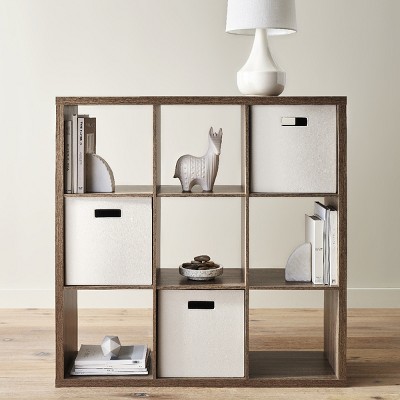Disaster Strikes
Last weekend a disaster struck. A massive majority of my miniature collection has come crashing to the ground thanks to the adventuresome behavior of my cat, Turtle. You see at the moment my miniatures are being housed in an old bedroom TV cabinet as I am working on “figuring out” an improved method of widespread storage. In reality I have been continuously making it worse by stacking an increasing number of boxes and containers on top of each other just waiting for the day something shakes the whole tower down.
Well that day happened. On Saturday I heard a large CRASH and was terrified it was my curious toddler. I go running and immediately feel two emotions. First I am absolutely relieved to find that no child or animal was hurt. Secondly I felt my heart sink to my stomach as I saw the devastation the laid before me.
Miniatures lay in pieces scattered over the floor as hundreds of models crashed on top of each other, into other boxes or just spread out. The largest damage of which is my painted miniatures of 2021. Over half of all models painted in the last year lay in pieces.


Trying to Piece it Back Together
I then proceeded to spend a large portion of my time to see if I can glue as much of the minis together. While I was trying to piece much of my hardwork of 2021 I had an inner dialogue of problems and perhaps ways I can fix them and should focus on for 2022.




Trying to Solve the Problems
Actually Utilizing My Storage Solutions
“Carrie, why in the world did you wait this long to try to organize your models?”
Voice in my head
You see this is actually ironic because last year I spent a long post series on organizing my collection & hobby space: Storage Wars. I even went as far to develop a new storage tray system for my models (Storage Wars: Part 3 Miniature Storage Trays). Yet in my haste towards the end of the year I did not fully utilize system. The biggest issues that I have is that I have no way to display or store models I’m using that are completed.
Solution: Actually utilize my storage solutions! Take the time to put models away. Find a way to store finished models safely or on display.
Experiment with New Materials
The harsh reality of it is that resin from 3D printing can be extremely brittle. Depending on the material used, duration of cure times, or even staying in storage exposed to UV light can increase this brittleness in your resin models & terrain. Towards the second half of last year I began to use harder resins which are more impact resistant making them more likely to just break rather than shatter. This was definitely noticeable in my Dwarven Frostgrave army printed mostly in 2020 rather than my husband’s necromancer undead army printed later 2021. When the newer models broke I could find most of them to try and glue back together. However some of the original resins used that were basic resins without additives such as ABS-Like or Hard were more likely to shatter rather than break. Let this be a testament on more durable resins being valuable! However in truth and with all the benefits of 3D printing the brittleness of the models definitely is a very strong negative about the 3D printing hobby. I had no reaper bone model damage, metal model damage and very little hard plastic model damage.
Solution: Prime all printed models to prevent more curing from storage & investigate and start a series of experiments with flexible resin additives to give models more give and capabilities to stay intact.
Begin Cataloging My Collection Again
Last year I started a database of my miniature collection as well as a visual catalog. While it is still a long way to go it is a start. One major downside to this is that in December I sold off a large portion of my collection and did not update my spreadsheet or visual. I need to go back through the list and update the data before I can continue to grow again.
Solution: Update the Spreadsheet, visual catalog and actually track the known vs unknown.
Conclusion
I recognize that finding better systems to account for ever curious toddlers and adventuresome creatures is a much needed thing. I wish I could have shelves to hold the things I love and have spent time on but just do not have the space for it in our home. If you have a precarious pile of models this is my warning to you to make it safer.
How do you keep your hard purchased or crafted items for your tabletop games safe? I keep telling myself that this is the moment where I learn my lesson, but only time will tell.
Happy Hobbying!
Carrie aka crazmadsci the Crazy Mad Scientist
Past Writings
-
Nova Open 2025 Recap
I am definitely riding the high from this year’s 2025 Nova open. And what a treat it has been to go to and see my friends. I always walk away full of inspiration, a bag full of goodies and a mind full of creative endeavors to do for next year. Heading to the event I…
-
A New Way to Organize your Paint: MixRack Modular Paint Storage Review
I’ve finally recieved my MixRack Paint Storage solution and writing my opinions and review of the product.
-
Kick-Off Event: 3D Printed Bloodbowl Pitch Part 1
Playing Bloodbowl is wacky and fun. But wouldn’t it be better with a fully fleshed out stadium to play in? Join my process of creating a 3D printed bloodbowl pitch.




































